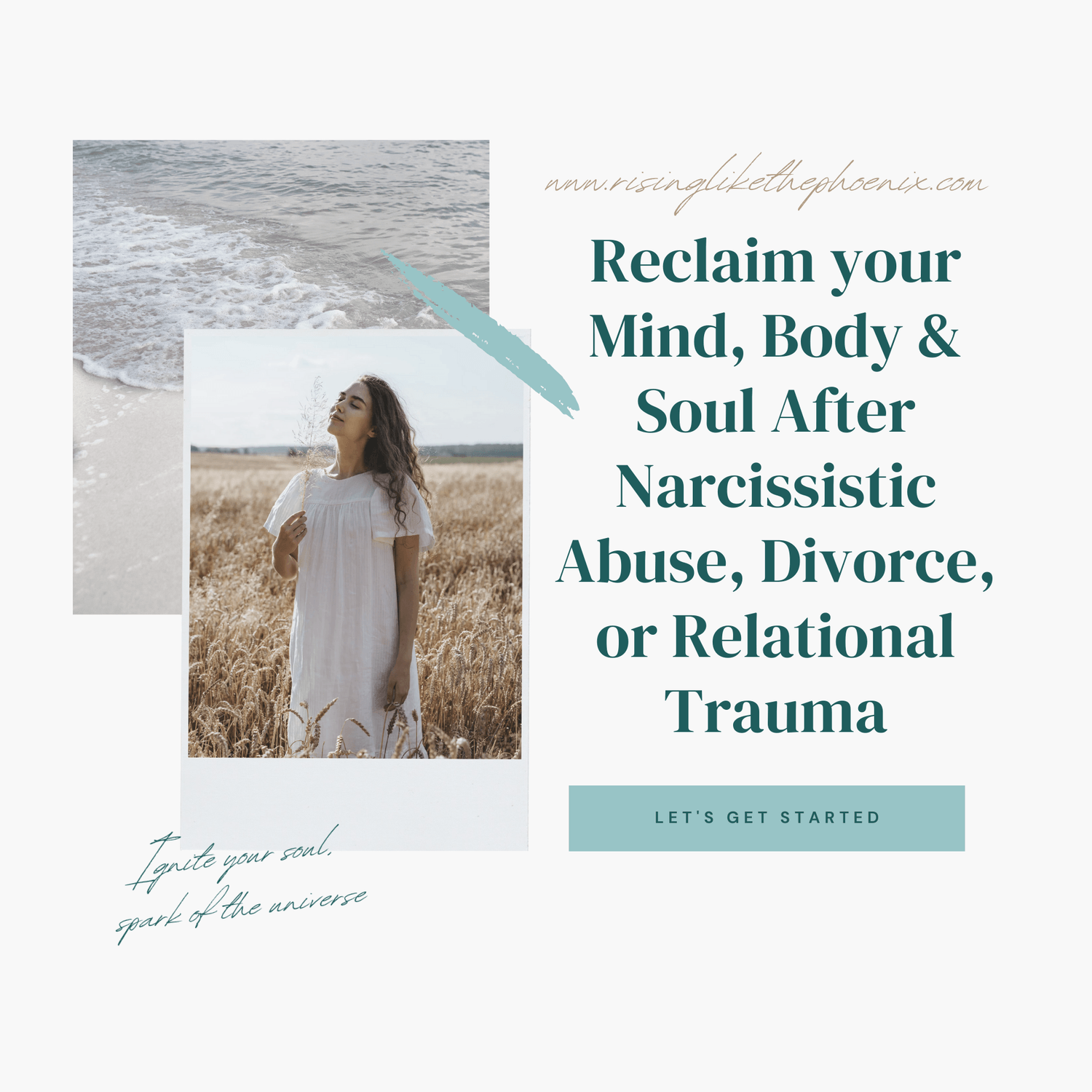How to Heal from Emotional Trauma After a Toxic Relationship
Emotional trauma from a toxic relationship isn’t just something you “get over”, it’s something you move through. Slowly. Gently. Sometimes with tears, sometimes with rage, but always with intention. Whether you’ve endured years of gaslighting, emotional manipulation, or the exhausting push-pull of narcissistic abuse, the aftermath can leave you feeling like a shadow of who you once were.
But here’s the truth: healing is possible. And more than that, it’s your birthright.
In this guide, we’ll walk through practical steps to begin your emotional healing journey and regain control of your mental and emotional well-being. Whether you’re newly out of the relationship or navigating the long-term effects of emotional abuse, these recovery steps will help you reclaim your self-worth and rebuild from the inside out.
Understanding the Depth of Emotional Trauma
Toxic relationships, especially those involving narcissistic abuse, create a unique type of emotional wound. One that’s hard to explain to others. You may not have bruises, but the gaslighting effects, verbal attacks, silent treatments, and betrayal have carved deep grooves into your heart and mind.
This kind of relationship trauma often leads to:
Chronic anxiety and hypervigilance
Low self-worth or shame
Emotional numbness or confusion
Difficulty trusting your own perceptions
Intrusive memories or flashbacks
Before jumping into “fixing” mode, we need to honor how serious this is. Emotional trauma is real. It impacts your nervous system, your ability to form healthy attachments, and your inner sense of safety. The first step is validating that your pain is valid, even if no one else saw what happened behind closed doors.
Step 1: Create Emotional Safety First
You cannot heal in the same environment that hurt you. Whether you’ve physically left the relationship or are still disentangling your life from a toxic partner, your first priority is safety, emotional, mental, physical, and even spiritual.
Ask yourself:
Do I feel safe in my home?
Do I feel safe in my own mind?
Do I need outside support to help create that safety?
Practical self-care tips:
Block or mute toxic contacts on social media
Practice grounding techniques to calm your nervous system
Begin a “truth journal” to track your real thoughts and feelings without judgment
Set small boundaries, even if it’s just saying “no” without explanation
Safety isn’t just about the absence of danger. It’s the presence of peace.

Step 2: Name the Abuse and Tell the Truth
Gaslighting effects can leave you second-guessing your reality. One of the most powerful recovery steps is to reclaim your story. That means identifying the abuse for what it was: manipulation, control, exploitation.
Start by naming the behaviors:
Love-bombing
Silent treatment
Jealousy disguised as protection
Public charm but private cruelty
Once you name it, the fog begins to lift. You are not crazy. You were conditioned to doubt yourself, and now, you’re taking your power back.
Healing Tip: Write down moments you dismissed as “no big deal” and re-examine them. What did your body feel? What would you say to a friend going through the same thing?
Step 3: Grieve What You Lost
The grieving process in narcissistic abuse recovery is layered. You grieve the person you thought they were. You grieve the future you imagined. And maybe hardest of all, you grieve the version of yourself who tolerated it.
Give yourself space to mourn without shame.
You might cry one day and feel strong the next. You might want to scream into a pillow or sit in silence for hours. There is no timeline for emotional healing. The key is to let yourself feel without editing.
Self-care tip: Create a “grief space” in your home,a corner with cozy blankets, candles, and maybe a playlist that lets the tears fall. You are not weak. You are processing.
Step 4: Reconnect with Your Body
Trauma lives in the body, not just the mind. After years of walking on eggshells or enduring constant emotional attacks, your nervous system may be stuck in fight, flight, or freeze mode.
Part of the emotional healing journey is getting reacquainted with your physical self, gently, without force.
Ideas to try:
Gentle yoga or stretching
Breathwork for trauma release
Dance or free movement to music that speaks to your soul
Somatic therapy or trauma-informed massage
Your body is not the enemy. It carried you through. Now it’s time to come home to it.

Step 5: Rebuild Self-Worth with Micro-Moments
Self-worth doesn’t come back all at once. After relationship trauma, especially if you were devalued, ignored, or told you were “too sensitive,” it’s normal to feel like you’ve lost yourself.
But here’s the good news: you can rebuild, brick by brick, moment by moment.
Start small:
Speak kindly to yourself when you make a mistake
Celebrate simple wins (“I made the call,” “I went for a walk,” “I asked for help”)
Dress in a way that makes you feel good, not to impress others, but to honor yourself
Make a promise to yourself and keep it
Repeat after me: I am allowed to take up space. I am worthy of love and peace.
Step 6: Find the Right Support System
You don’t have to do this alone. One of the most powerful recovery steps is finding a circle ,whether that’s a therapist, coach, support group, or a trusted friend, who understands the deep emotional layers of narcissistic abuse recovery.
Look for trauma-informed support. Someone who understands the complexity of emotional abuse, especially when it’s covert.
Helpful options:
A therapist trained in CPTSD or narcissistic abuse
Online recovery communities
A healing coach with lived experience
Support groups for women navigating toxic relationship help
Warning: Not everyone will understand. That’s okay. Don’t waste precious energy explaining yourself to people who minimize your pain.
Step 7: Set and Strengthen Boundaries
After gaslighting and emotional trauma, setting boundaries can feel terrifying. But boundaries aren’t about control, they’re about self-protection and self-love.
Start with:
“I’m not available for that conversation right now.”
“Please don’t speak to me that way.”
“I need time before I respond.”
And remember, no is a complete sentence.
Your peace matters more than their comfort.
Step 8: Visualize the Future You Deserve
As the fog lifts, you’ll begin to remember who you are. And who you’re becoming. This isn’t just about surviving abuse, it’s about rising from it.
Spend time dreaming again. Visualize:
A life without fear
Relationships rooted in mutual respect
A version of you that laughs easily, trusts herself, and owns her space
This is not a fantasy. It’s your next chapter. One built on truth, resilience, and radiant self-worth.

Final Thoughts: You Are Not Broken
Healing from emotional trauma after a toxic relationship is not a straight line. It’s a spiraling path of rediscovery, grief, empowerment, and joy. There will be setbacks. But there will also be breakthroughs.
Each step you take is a radical act of self-love.
You are not broken. You are healing. You are rising.
Frequently Asked Questions
There’s no one-size-fits-all answer. Some people begin to feel more stable within months, others take years. The timeline depends on the severity of trauma, your support system, and how deeply you invest in recovery.
Therapy is a powerful tool, especially with a trauma-informed provider. But healing is multi-dimensional. Books, courses, support groups, and self-guided reflection can also support your journey.
That’s normal. Trauma bonding is real. Missing someone who hurt you doesn’t mean you made the wrong decision,it means you’re human. Be gentle with yourself as you untangle those emotional threads.
Trust comes from honoring your inner voice consistently. Start by noticing your intuition, validating it, and taking small actions that align with it. Over time, your inner GPS will feel stronger.
5 Steps to Reclaim Your Life
A practical guide to reclaiming your confidence, setting boundaries, and moving forward—without second-guessing yourself.

Hi, I’m Diane – and I’m so glad you’re here
Diane is the author of A Girlfriend’s Guide to the Other Side: Reclaim Your Mind, Body, and Soul After Narcissistic Abuse, Divorce, or Relational Trauma.
After surviving the wreckage of a controlling relationship that stripped her identity, she turned her pain into purpose. Through her book, course, and community, Diane now guides women on the journey of rebuilding self-worth, setting healthy boundaries, and reclaiming their lives.
Her mission is simple: to remind every woman that healing is possible, and that your future can be brighter than your past.
Categories
Rise Weekly Newsletter
Because healing isn’t just about surviving, it’s about rising. Rise Weekly delivers empowering insights, gentle reminders, and soulful tools to help you reclaim your strength, set powerful boundaries, and rebuild a life that feels like you. If you're ready to rise above trauma and step into your next chapter with clarity and courage - this is your space.
Created by © Suzanne Startari with systeme.io





